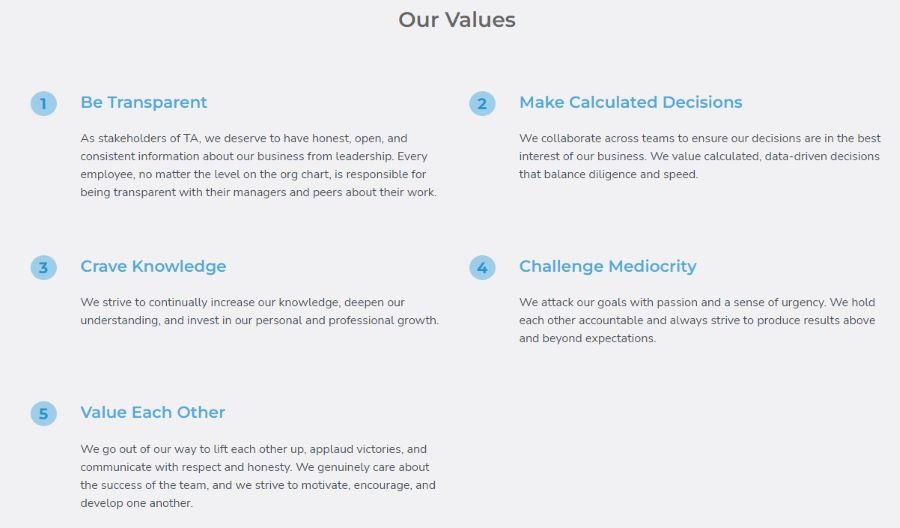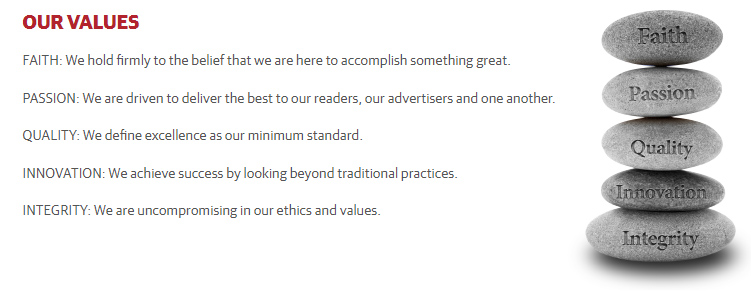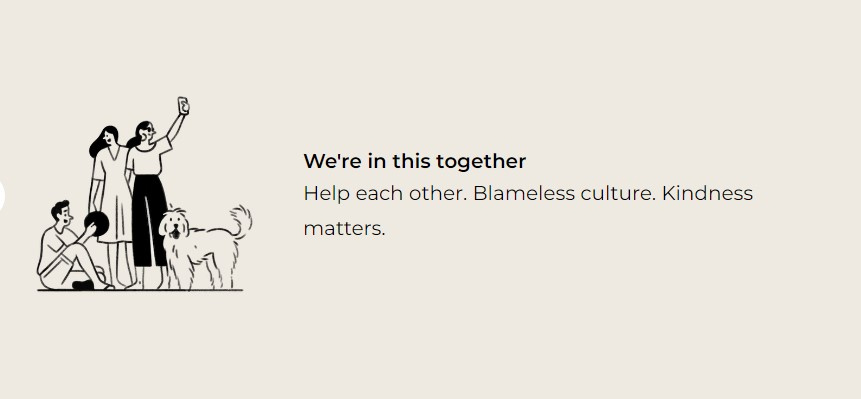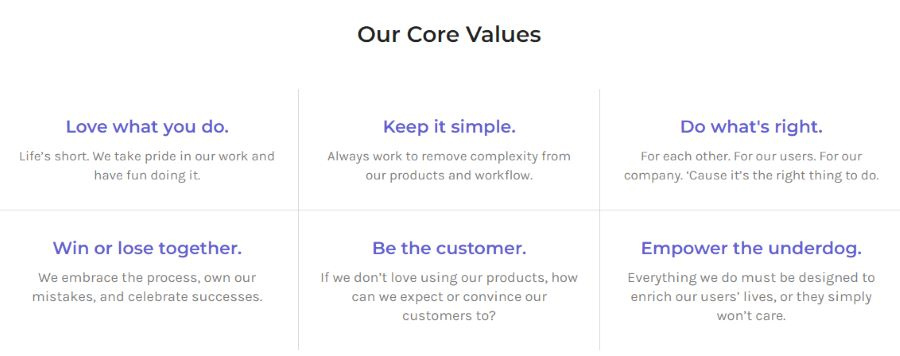In the fast-paced world of business, a company’s success is intertwined with its unique culture. Company culture is one of the key factors to a company’s success and longevity, impacting operations, strategic planning, and, ultimately, overall business performance. Let’s learn more about company culture, take a look at the elements that shape it, and explore some strategies to cultivate a positive and productive work environment.
One way to create a good first impression and showcase your company culture is to optimize your careers page and job listings. Zoho Recruit is a customizable recruitment software that helps you manage the hiring process—from creating a careers page and posting job ads to hiring and onboarding. It offers a free forever plan with basic tools as well as paid plans from $30 to $90 per user.
What Is Company Culture?
At its heart, company culture is the shared values, beliefs, and behaviors that define an organization. It’s the unseen force that influences how individuals interact, make decisions, and contribute to the overall mission. Far more than a buzzword, company culture is the lifeblood that determines the health and success of an organization.
Elements That Shape Company Culture
Company culture—which starts at the beginning of the hiring process, from finding employees to interviewing and onboarding—drives how employees feel about working for your business once their basic needs of compensation and safety are ensured.
Click through the tabs below for more detail on some of the key elements that help shape your culture.
Other Key Components of a Great Company Culture
- Mutual Respect: At the end of the day, if there is no respect among staff, team members will never believe their culture is one worth contributing to. Although conflict occurs in a healthy workplace, mutual respect is essential to allowing a culture to grow and thrive.
- Individual and Team Trust: Trust is an attribute that flows throughout the entire organization. When it is strong and healthy, there is no limit to your company’s potential. When trust is waning, your chances of establishing a great company culture decrease a little every day.
- Communication: Good communication is essential within an organization. The definition of strong organizational communication needs to come from your employees, not your leadership team.
- Decision-making: Allowing some decision-making channels to run through non-leadership committees is a great indicator that the management team trusts the capability and expertise of the teams. This practice promotes team ownership and directly feeds into a cultural building exercise employees deeply appreciate.
- Goals/Strategies: Allowing team members into the strategic planning process, at least at the goal-setting level of planning, sends the message that you value their input.
- Adaptability: Being adaptable includes handling revolving markets, competition, and other business-threatening demands in addition to quickly pivoting to meet changing employee needs.
- Results Orientation: Nothing is more powerful than completing large projects as a team. When a results-driven mindset fuels the company, it promotes organizational processes and programs that matter.
- Teamwork: It is difficult to imagine a great company culture that does not promote inclusive teamwork. Your organization should avoid placing people in silos and prioritize an inclusive atmosphere where all departments and employees work together.
- Employee Engagement: To promote employee engagement, you have to focus on motivating and inspiring your team members (your greatest asset) to be part of your organization. Learning what makes them tick is essential.
- Learning Opportunities: Cost-effective growth opportunities are essential to maintain to be considered an employer who truly engages a multigenerational workforce.
- Meaning/Purpose: Beyond the employee’s paycheck, healthcare benefits, and vacation time, the attribute that your employees desire more than anything is purpose. They want to know that the role they play in your organization matters significantly.
- Safety: Physical safety, like for construction companies, and job security are important to employees. It’s your job to convince your team members that they are safe, valued, and cared for.
- Leadership Team Approachability: Nothing says “we are in this together” more than when the newest team member can walk into an executive team member’s office and speak their mind respectfully.
Company culture affects every step of the employment cycle, even the beginning. For help with hiring, check out our guide on how to hire new employees.
Common Types of Company Culture + Real-Life Examples
Company culture can take various forms, and different organizations may exhibit distinct cultural characteristics. Here are some common types of company culture:
- Prioritizes teamwork, open communication, and a shared sense of purpose.
- Values collaboration over individual achievement and encourages a sense of community.
Example: Zappos, an online shoe and clothing retailer, is known for its emphasis on teamwork and collaboration. The company’s organizational structure encourages open communication, and employees are empowered to contribute to decision-making processes.
- Emphasizes clear organizational structure and defined roles.
- Values stability, order, and adherence to established procedures.
Example: IBM has historically been associated with a hierarchical culture due to its large and established organizational structure. Decision-making authority tends to flow through various levels of management, with a clear chain of command.
- Prioritizes creativity, forward-thinking, and a willingness to explore new ideas.
- Values experimentation and views failure as a part of the learning process.
Example: Known for encouraging creativity, Google provides employees with a work environment that fosters innovation. The company’s famous “20% time” policy allows employees to dedicate a portion of their work hours to personal projects, resulting in the development of products like Gmail and Google Maps.
- Focuses on achieving measurable outcomes and meeting performance goals.
- Prioritizes efficiency, productivity, and delivering tangible results.
Example: Amazon is renowned for its results-oriented culture, emphasizing a focus on achieving goals and delivering outcomes. The company prioritizes efficiency, and its leadership principles emphasize customer obsession, ownership, and a bias for action.
- Places a strong emphasis on understanding and meeting customer needs.
- Values customer satisfaction and strives to exceed customer expectations.
Example: Nordstrom, a high-end department store, is recognized for its exceptional customer service. The company’s culture revolves around putting the customer first, empowering employees to go above and beyond to meet customer needs and expectations.
- Fosters a spirit of entrepreneurship and risk-taking.
- Encourages employees to take initiative, be proactive, and think like business owners.
Example: SpaceX, founded by Elon Musk, embodies an entrepreneurial culture. The company is known for its ambitious goals, risk-taking in the aerospace industry, and a culture that encourages employees to think innovatively and push boundaries.
- Promotes diversity, equity, and inclusion.
- Strives to create an environment where all individuals feel valued, respected, and included.
Example: Salesforce is committed to creating an inclusive workplace. The company actively promotes diversity and equality, with initiatives aimed at ensuring equal opportunities and representation for employees of all backgrounds.
- Emphasizes adherence to established processes and procedures.
- Values consistency, efficiency, and a systematic approach to tasks.
Example: McDonald’s is recognized for its highly standardized and process-driven approach to operations. The company has meticulously designed processes for everything, from food preparation to customer service, ensuring consistency across its global chain.
- Prioritizes employee growth, skill development, and continuous learning.
- Encourages professional development and provides opportunities for skill enhancement.
Example: LinkedIn places a strong emphasis on employee learning and development. The company provides various learning resources, encourages skill-building, and supports continuous professional growth for its employees.
Why Is Company Culture Important?
Company culture is important for several reasons—it influences various aspects of an organization’s functioning and has a profound impact on both employees and the overall business. Here are some key reasons why company culture is considered crucial:
- Productivity and performance: Improves productivity and performance as motivated employees contribute their best efforts.
- Innovation: Certain cultures, like adhocracy, drive innovation and creativity within the organization.
- Team collaboration: Promotes effective teamwork and open communication, enhancing overall productivity.
- Organizational reputation: Contributes to the company’s reputation by emphasizing ethical behavior and social responsibility.
- Adaptability: Provides stability and fosters adaptability, helping employees navigate change successfully.
- Employee well-being: Prioritizing well-being reduces stress, burnout, and contributes to a satisfied and healthy workforce.
- Alignment with goals: Aligns employees with the organization’s mission, vision, and goals, creating a focused and cohesive workforce.
Tips for Building a Good Company Culture
Understanding company culture is one aspect of being a successful employer; building it is another. To build a solid company culture, you must take a holistic and integrated approach.
Mission and vision statements are key components of any business. They help set a goal of what you want to be and where you want to go. If you need help creating your vision and mission, see our articles with great examples of vision statements and mission statements.
To build a strong company culture, you have to live out your vision and mission. For example, a company focusing on improving healthcare options might have a very generous time off policy while a company that wants to be innovative may have workspaces that include items such as games and whiteboards to stimulate play and creativity.
Asking employees about the company’s strengths and weaknesses and if it is doing a good job acting on its core values will go a long way in developing a positive culture. You should also be intentional about asking a diverse group of employees in your company. A diverse group of employees will help you build an inclusive culture that will attract a large, diverse set of customers. Lastly, these types of conversations will also help you to know what questions to ask new applicants to see if they would be a good cultural fit.
Based on your employees’ responses and customers’ feedback, you may decide you need to change some aspects of your culture. That may mean changing core values, adding new policies, loosening some restrictions, or even revising your vision or mission statement. Being agile enough to change with the times will allow your culture to grow (and grow with) your businesses.
If you’ve built a great company culture, make sure you market that to current and prospective employees. Check out our articles on employer branding and how to advertise an open position.
Frequently Asked Questions (FAQs)
To define or identify your company’s culture, look at shared values, communication styles, leadership behavior, and the overall work environment. Conduct surveys, hold focus groups, and observe daily interactions to gain insights. Your mission statement, vision, and the way decisions are made can also provide clues about your culture.
Yes, company culture can change over time. It evolves as organizations grow, face new challenges, and adapt to external factors. Leadership changes, mergers, and shifts in industry trends can influence culture. Organizations can intentionally drive cultural change through strategic initiatives, policies, and leadership actions.
A positive company culture enhances employee morale and performance. When employees feel aligned with the organization’s values and enjoy a supportive work environment, they are more engaged, motivated, and likely to perform at their best. Conversely, a negative culture can lead to dissatisfaction and decreased performance.
Common challenges include resistance to change, unclear communication, lack of leadership alignment, and difficulty in maintaining consistency across diverse teams. Balancing innovation with stability and addressing issues like inclusivity, communication breakdowns, and conflicting values are also common challenges.
Bottom Line
Understanding what defines your company’s culture and how you can develop and nurture that culture will help you to build a great place to work and a growing and thriving business. Using the provided examples and types of company culture, you can improve or promote the culture you want to have for your business.





